
Confinement feeding stock
| Primefact number | Edition | Published | Author |
|---|---|---|---|
| 554 | Second | Jun 2019 | Todd Andrews (NSW DPI) and Brett Littler (Central Tablelands LLS) |
Introduction
Confinement feeding areas (also referred to as ‘droughtlots’ or ‘Stock containment areas’) are used for short term production or maintenance ration feeding.
Feeding stock in a confined area allows producers to provide full rations and for pastures to be rested. It is a valuable drought management strategy, providing numerous benefits:
- reduces stock energy requirements by 8-15% (less walking for feed and water)
- stock feeding is quicker and easier
- stock health and weight can be easily monitored, and sale stock separated
- weeds and pests from introduced feed can be monitored and managed
- maintains paddock groundcover, reduces erosion and maximises rain infiltration
- protects valuable pasture and soil assets, allowing for rapid recovery after rain
- the site can be used when pastures are affected by other emergencies such as fire, flood and locust plagues.
When to use confined feeding
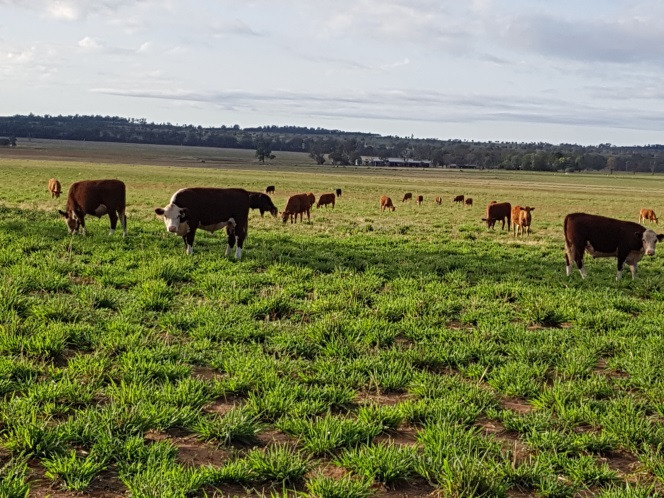 Stock should be removed from pastures before ground cover declines to 70%, but this threshold may vary due to topography and location. Beyond this, there is increased risk of wind and water erosion, and damage to valuable perennial pastures.
Stock should be removed from pastures before ground cover declines to 70%, but this threshold may vary due to topography and location. Beyond this, there is increased risk of wind and water erosion, and damage to valuable perennial pastures.
In addition to preserving valuable soil and pasture resources, confining stock allows managers to monitor and manage stock weight and health more easily. While sheep may gain some value grazing seemingly bare paddocks, cattle obtain little benefit due to their different grazing habits. What little energy gained from remaining pasture is offset in the energy required to search for that feed.
Site selection
The purpose of the feeding area should be carefully considered before planning its location and construction. Structures likely to be temporary should low cost facilities that utilise existing infrastructure such as fences, laneways, stockyards, sheds, roads and water supplies.
Temporary areas can utilise paddocks of degraded pasture or those with annual species and good soil seed reserves; or stubble paddocks with a cover of roughage and straw to prevent wind and water erosion. Easy access to re-sow crops and pastures and manage weeds is also an advantage. Conversely, perennial pasture paddocks that are expensive and difficult to replace should be avoided.
Even though confinement areas maybe temporary or used for short term feeding, the potential for impacts on sensitive sites, environmental areas and neighbours must be considered. If the site is likely to be used regularly or converted into a feedlot, then the importance of sensitive site proximity and environmental factors is much greater, and council approval required. Refer to the factsheet Temporary arrangements for drought and other emergency events (planning.nsw.gov.au) for more information.
Access to water- A guaranteed supply of good quality water to the site is essential.
Soil type- Sandy and gravelly soils are unsuitable as they have high infiltration rates that may allow groundwater to be contaminated. Conversely, clay soils can be compacted by machinery or stock to form an impermeable layer that protects groundwater. Note that this also produces more runoff that must be managed.
Drainage- The top of a gentle slope is an ideal site as it assists runoff, avoids ponding, and minimises bogging after rain for both stock and vehicles. Steep slopes can result in erosion. Avoid low lying areas and drainage lines, and where runoff can enter creeks and waterways.
Shelter- While stock should be sheltered from prevailing winds during winter, air flow in summer can be important to minimise heat stress. Shade is not essential in all areas depending on heat and humidity. Artificial shade must be high enough to allow air flow, and be oriented to allow the yard to dry. Any trees in the area need protection from damage such as ring barking due to stock rubbing or chewing the trees.
Impacts on adjacent areas- Site runoff must not contaminate natural water courses, water storages or neighbouring properties. Be aware of prevailing winds and distance to neighbours with respect to odour, dust and noise. Shield the site from roads or other viewpoints, using available topography or tree lines.
Vehicle access- Vehicle access to the yards is required under all weather conditions, for a larger number of trips. Existing, compacted roadways maybe suitable, but upgrades using compaction and/or gravel maybe required for trucks.
Residues- The proposed area must be free of potential residues. High risk sites include old sheep yards and dips where arsenic or organochlorines may have been used.
Stock density
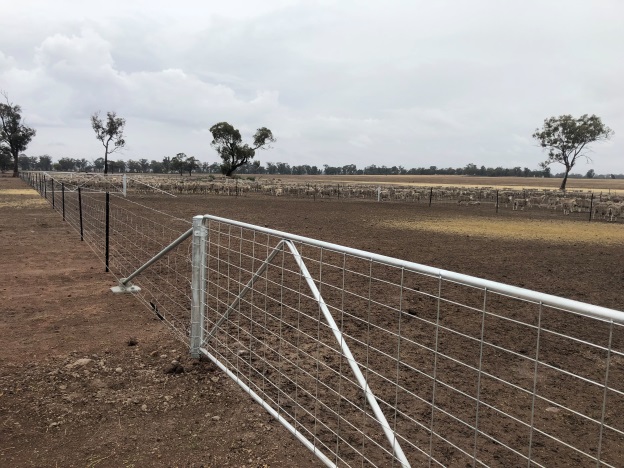
Confinement paddocks should hold just the number of stock to be fed. While stock density can vary depending on stock size, pregnancy status and climate, a major consideration is the balance between dust and mud, which can both affect animal welfare and performance.
High stocking densities can lead to bogging if rain falls (which also increases humidity and the potential for heat stress in summer) while low densities can lead to dust problems. Recommended cattle densities are as follows:
- weaners – 9 to 10m2 per head
- yearlings – 12 to 14m2 per head
- dry cows – 15 – 25m2 per head
Maximum mob size is 250 for cattle and 400 for sheep but smaller mobs are easier to monitor and draft off the ‘tail’ of sick animals and shy feeders. Maximum mob size should be 100 for smaller calves. Where possible, animals within each mob should be a similar size and weight to reduce bullying and poor feed access.
Minimum space allowances for sheep are 1m2 for lambs up to 1.5m2 for adults, with 5m2 per sheep considered ideal.
Pregnant cows and ewes need additional space to give birth and ‘mother up’ so consider drafting off those closest to calving/lambing into a small, adjacent paddock. Ad lib feeding during this time minimises mismothering due to dams rushing to feed. If ad-lib feeding is not possible, then regular feeding, in early- to mid-afternoon, is preferred.
A separate yard should be set aside as a ‘hospital’ yard to isolate and treat sick animals and separate shy feeders.
Pen construction
Fencing
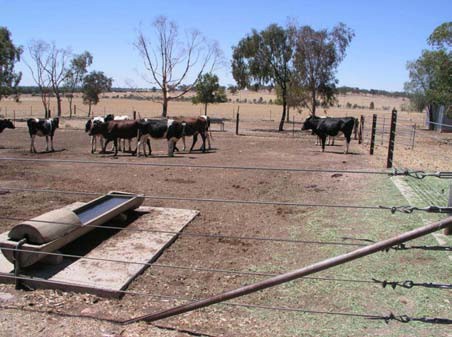
A solid, 1200mm high fence with 5 wires is adequate for cattle. This can be reinforced with an electric outrigger wire on the inside of the fence. A 3-line electrified fence should be adequate in temporary situations, while steel cable is an excellent option for permanent structures.
For sheep, standard 7-90-30 hingejoint fencing is preferred (smaller hingejoint can result in getting heads stuck), with carry wires bottom, middle and top and steel posts spaced at 4-5m. Gateways must be wide enough to handle the anticipated mob size.
Feed troughs
Some form of feed trough is essential, as feeding on the ground in yards will cause wastage, soil intake and disease. Minimum trough lengths where feed is rationed, are 30cm/hd for weaners, 40cm/hd for yearlings, 60cm for adult cattle and more for horned stock.
Cattle feed troughs are best situated along fence lines, which should be strengthened with timber, cable or pipe 45–50cm above the trough to prevent stock pushing through. Troughs that can be filled from outside the yard minimise disruption during feeding.
Troughs should be 45–60cm wide and deep enough to hold the ration with the top of the trough maximum 60cm from the ground. A trough that is 10–15cm higher at the back (outside) reduces wastage. For young stock, troughs that are too deep can cause baulking due to poor vision, while those too high can affect feed access and intake.
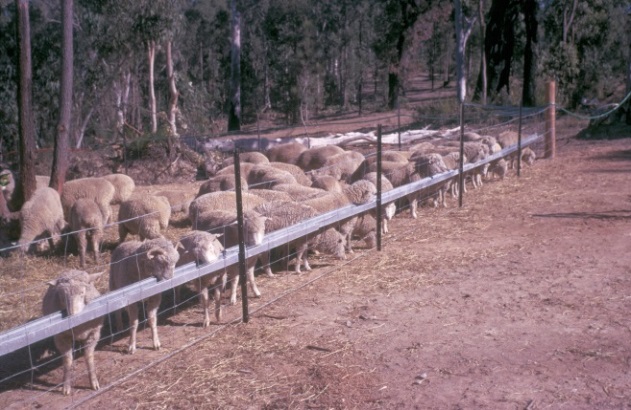
Troughs can be made from 200L drums cut in half lengthways and fastened end-to-end to bush timber. Conveyor belting and roofing iron can also be used. Concrete or steel feed troughs are excellent, but are suited to permanent feeding areas.
Allow 3cm of trough space per head when feeding sheep ad-lib, and 30cm per head when feeding specific amounts per head, when all sheep need to feed at the same time.
Troughs should be positioned on the high side of pens, sloping away from troughs (inside the pen) to minimise manure accumulation. Troughs running east to west can get wet and boggy on the south side.
Self-feeders are less suitable for feeding maintenance and limited rations as this can result in over and under feeding of some animals. Note that high roughage diets can block self-feeders while lick feeders can block when saliva mixes with dust or other ration ‘fines’ and sets hard. Stock should be introduced to the ration before using self-feeders.
Self-feeders can be moved around the yard to avoid bogging but can be difficult to access when limited rations are being fed, due to rushing stock. A combination of troughs or self-feeders for grain or concentrates and hay feeders for roughage, works well. Overhead hay racks drop dust and hay onto animals’ faces, causing eye and respiratory problems.
Troughs should be cleaned out as required, but at least weekly. Additives such as urea can settle to the bottom, accumulating potentially toxic levels.
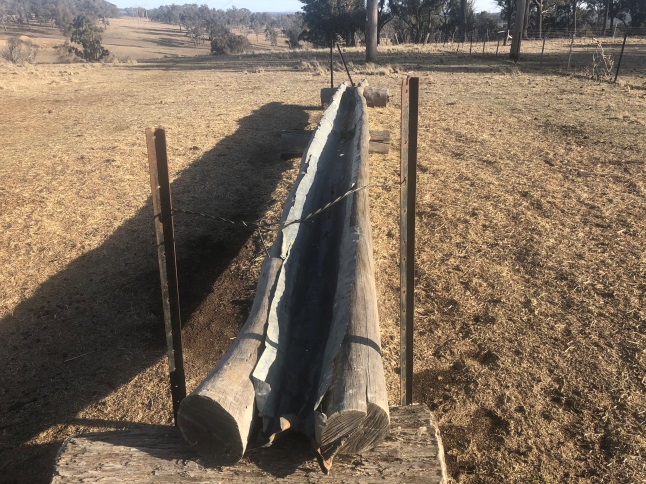
Water troughs
Water troughs should be as far from feeders as possible, but at least 10m, to minimise grain contamination from an animal’s mouth. This can ferment and cause digestive upsets or sour the water.
Troughs placed along fence lines can be used by stock on both sides of the fence, and should be sited so that they can drain outside the yard when they are cleaned, or if a leak develops.
Troughs should be long enough to allow at least 10% of cattle to drink at any one time, with at least 300mm space for every 10 head. For example a 3m trough can water 100 head. For sheep, allow at least 30cm of trough for the first animal and 1.5cm for each additional animal.
Low volume troughs are suitable provided there is enough flow to water the mob in 2-3 hours. These troughs are prone to heat up and so should be positioned in the shade, with piping underground, to keep water cool.
Ballcocks and floats should be protected from stock. For more information on water requirements by different classes of stock, refer to NSWDPI Primefact 269 ‘Stocktaking water supply for livestock’.
Water troughs should be checked daily to ensure there are no problems, especially in very hot weather. Unusual behaviour such as animals preferring to drink near the intake, or crowding for a drink immediately after trough cleaning, can indicate water quality issues.
Yard management
Dust
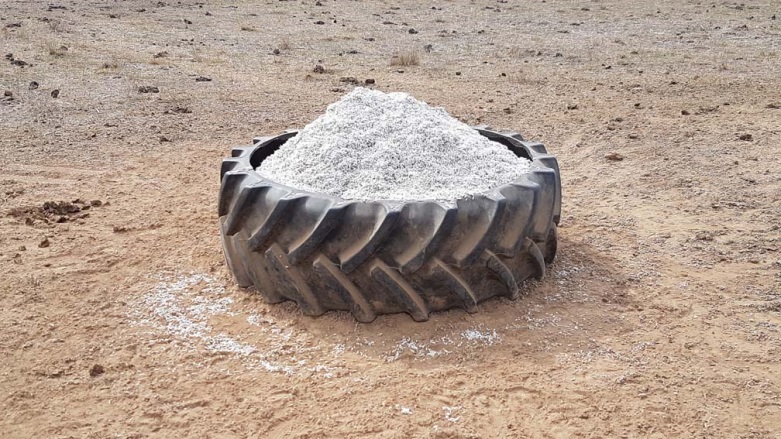
Excessive dust is not only unpleasant for workers and neighbours, it can also develop a film on water troughs and stock feed, reducing palatability and leading to health problems. Sheep can be especially sensitive to water troughs affected by dust.
Suitable stock densities develop a ‘pad’ of manure and urine that suppresses dust but also provides a firm base that facilitates pen cleaning. Since dust problems usually cannot be entirely eliminated, avoid positioning roads, stockyards or other high traffic areas on the windward side of feeding pens, houses or other sensitive areas.
Yards should be cleaned to prevent sediment build up which turns to dust in dry conditions, and mud when rain falls. Concrete or compacted gravel aprons, 2–3m wide around feed and water troughs also minimise bogging.
Animal health
 Observe stock daily and learn to recognise normal behaviour, including breathing rate, grooming and salivating, as well as the consistency and odour of dung. Do not “set and forget”, by setting up the confinement feeding area and assuming that all stock will thrive. Animal behaviour and weight gain can indicate where improvements can be made to nutrition, health and management. Seek advice on anything unusual. Bark chewing, hair licking and dung eating can occur when cattle are on grain survival rations but these habits are not serious.
Observe stock daily and learn to recognise normal behaviour, including breathing rate, grooming and salivating, as well as the consistency and odour of dung. Do not “set and forget”, by setting up the confinement feeding area and assuming that all stock will thrive. Animal behaviour and weight gain can indicate where improvements can be made to nutrition, health and management. Seek advice on anything unusual. Bark chewing, hair licking and dung eating can occur when cattle are on grain survival rations but these habits are not serious.
Producers should be able to recognise and manage common diseases that could be encountered, including acidosis, coccidiosis, respiratory disease, foot infections and pinkeye.
Good quality feed and water are important for animal health. While other factors interact to affect an animal's susceptibility to disease during drought, the risks can be minimised by good management and the use of preventative treatments:
- control internal parasites (including fluke where relevant). Monitor sheep worm levels with egg count tests prior to entry.
- 5-in-l vaccination to prevent clostridial diseases; 6-in-1 to include cheesy gland in sheep; 7-in-1 to include leptospirosis.
- vitamin A, D and E treatments after 2–3 months on dry feed.
- vaccinate, control dust and flies and avoid elevated hay racks to manage pinkeye.
- Treat for lice in cooler months.
- prevent urinary calculi (water belly) in wethers by providing good quality water, supplemental calcium and salt, and roughage where possible.
- consider vaccinating cattle against bovine respiratory disease and botulism (if feeding silage). Discuss these and other possible health treatments with your local LLS District Vet.
Heat stress may become a problem when confinement feeding cattle during the summer months. When exposed to ongoing high ambient temperatures, high relative humidity and low wind speeds, cattle may accumulate heat. They may crowd the water trough, become agitated and restless, bunch to seek shade from other animals and start panting. If animals show symptoms of heat stress they should be released into areas with shade and provided cool water.
More information
- Managing and preparing for drought 2018. Eighth Edition, NSWDPI.
- Managing sheep in droughtlots: a best practice Guide. 2017 AWI
- Stock Containment Areas: More than a drought measure. October 2018 Agriculture Victoria
- Stocktaking property water for livestock. February 2019 NSWDPI
- Temporary arrangements for drought and other emergency events. February 2019 Department of Planning and Environment Factsheet.
Acknowledgements
Geoff Minchin (Riverina LLS, Temora), Jillian Kelly (Central West LLS, Coonamble) and Jen Smith (CSIRO, Chiswick) kindly reviewed this Primefact, which is based on an original version written by Bruce Mackay and Jeff House.
For updates visit Feeding and nutrition
Reference number INT19/103590
© State of New South Wales through the Department of Industry, 2019. You may copy, distribute and otherwise freely deal with this publication for any purpose, provided that you attribute the NSW Department of Primary Industries as the owner.
Disclaimer: The information contained in this publication is based on knowledge and understanding at the time of writing (July 2019). However, because of advances in knowledge, users are reminded of the need to ensure that information upon which they rely is up to date and to check currency of the information with the appropriate officer of the Department of Primary Industries or the user’s independent adviser.

